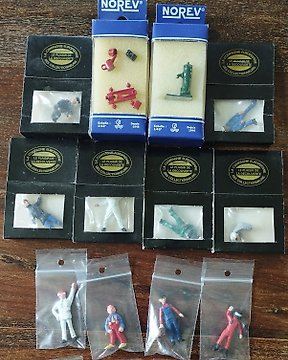
Norev compagnie européenne des collectionneurs - Dioramă - Franța
Nr. 19818571

Nr. 19818571

Rare french infantry rifle "Modèle 1842 T" from Manufacture Royale de Mutzig. Made in 1844.
Great state of preservation (let'ts see the pictures), everything works perfectly.
Total length : 142cm
Weight : 4125g
Caliber : 18mm
Take care of the importation rules according to your country !
I'll send it carefully thourgh Chronopost/DPD
HISTORY
The Chassepot, officially known as Fusil modèle 1866, was a bolt action military breechloading rifle, famous as the arm of the French forces in the Franco-Prussian War of 1870/1871. It replaced an assortment of Minié muzzleloading rifles many of which were converted in 1867 to breech loading (the Tabatière rifles). A great improvement to existing military rifles in 1866, the Chassepot marked the commencement of the era of modern bolt action, breech-loading, military rifles. Beginning in 1874, the rifle was easily converted to fire metallic cartridges (under the name of Gras rifle), a step which would have been impossible to achieve with the Dreyse needle rifle.
It was manufactured by MAS (Manufacture d'armes de Saint-Étienne), Manufacture d'Armes de Châtellerault (MAC), Manufacture d'Armes de Tulle (MAT) and, until 1870, in the Manufacture d'Armes de Mutzig in the former Château des Rohan. Many were also manufactured under contract in England (the "Potts et Hunts" Chassepots delivered to the French Navy), in Belgium (Liege), and in Italy at Brescia (by "Glisenti"). The approximate number of Chassepot rifles available to the French Army in July 1870 was 1,037,555 units. Additionally, State manufactories could deliver 30,000 new rifles monthly. Gun manufacturers in England and Austria also produced Chassepot-rifles to support the French war effort. The Steyr armory in Austria delivered 12,000 Chassepot carbines and 100,000 parts to France in 1871. Manufacturing of the Chassepot rifle ended in February 1875, four years after the end of the Franco-Prussian War, with approximately 700,000 more Chassepot rifles made between September 1871 and July 1874.
In the Franco-Prussian War (1870/1871), the Chassepot met its Prussian counterpart, the Dreyse needle-fire rifle. The Chassepot had several advantages over the Dreyse. It featured a rubber obturator on its bolt head to provide a more efficient gas-seal. Although it fired a smaller caliber (11 mm vs. 15.4 for the Dreyse), the Chassepot ammunition had more gunpowder (5.68 grams vs 4.85 grams), resulting in higher muzzle velocity (436 meters per second, 33% over the Dreyse), a flatter trajectory and a longer range. Thus the sights on the Chassepot could be elevated up to 1,600 meters, while the maximum sight setting of the Dreyse was only 600 meters.
Cum să cumperi de la Catawiki
1. Descoperă ceva special
2. Plasează cea mai mare ofertă
3. Fă o plată sigură